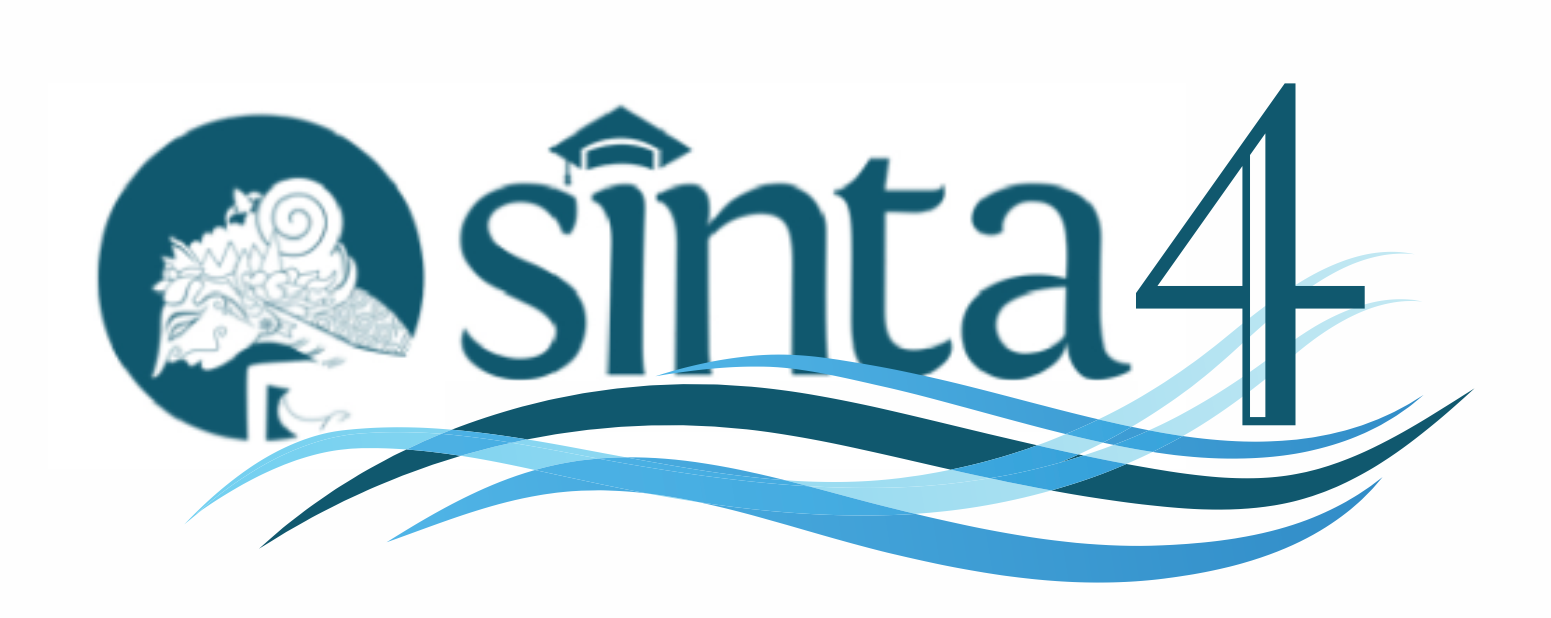IMPLEMENTASI RANCANGAN DIGITAL GAMIFIKASI DALAM PEMBELAJARAN DI TK TUNAS JAYA SUNGAILIAT
Abstract
Pengabdian kepada masyarakat ini bertujuan untuk mengimplementasikan rancangan digital gamifikasi dalam pembelajaran di TK Tunas Jaya Sungailiat guna meningkatkan minat dan motivasi belajar anak. Masalah yang dihadapi adalah rendahnya keterlibatan siswa dalam proses pembelajaran tradisional yang mengandalkan metode konvensional. Tujuan kegiatan pengabdian ini adalah untuk memperkenalkan dan menerapkan konsep gamifikasi yang berbasis teknologi digital sebagai pendekatan inovatif dalam pembelajaran anak usia dini. Metode yang digunakan dalam pelaksanaan kegiatan ini meliputi pengembangan materi pembelajaran digital berbasis gamifikasi, pelatihan bagi guru, serta penerapan dalam kegiatan pembelajaran sehari-hari. Hasil dari kegiatan ini menunjukkan adanya peningkatan signifikan dalam keterlibatan anak-anak selama kegiatan pembelajaran. Anak-anak terlihat lebih antusias dan tertarik dengan materi yang disajikan melalui elemen-elemen permainan yang menyenangkan. Selain itu, para guru juga menunjukkan peningkatan dalam pemahaman dan kemampuan dalam mengintegrasikan teknologi ke dalam proses pembelajaran. Dengan demikian, implementasi rancangan digital gamifikasi di TK Tunas Jaya Sungailiat terbukti efektif dalam meningkatkan kualitas pembelajaran dan keterlibatan siswa.
Full Text:
PDFReferences
S. Deterding, D. Dixon, R. Khaled, and L. Nacke, “From game design elements to gamefulness: Defining ‘gamification,’” Proc. 15th Int. Acad. MindTrek Conf. Envisioning Futur. Media Environ. MindTrek 2011, pp. 9–15, 2011, doi: 10.1145/2181037.2181040.
N. P. Wulantari, A. Rachman, M. N. Sari, L. J. Uktolseja, and A. Rofi’i, “The Role Of Gamification In English Language Teaching: A Literature Review,” J. Educ., vol. 6, no. 1, pp. 2847–2856, 2023.
V. Mandailina, S. Syaharuddin, D. Pramita, I. Ibrahim, and H. Haifaturrahmah, “Pembelajaran Daring Dalam Meningkatkan Motivasi dan Hasil Belajar Peserta Didik Selama Pandemi Covid-19: Sebuah Meta-Analisis,” Indones. J. Educ. Sci., vol. 3, no. 2, pp. 120–129, Mar. 2021, doi: 10.31605/IJES.V3I2.955.
R. S. Alsawaier, “The effect of gamification on motivation and engagement,” Int. J. Inf. Learn. Technol., vol. 35, no. 1, pp. 56–79, 2018, doi: 10.1108/IJILT-02-2017-0009/FULL/XML.
J. Banfield and B. Wilkerson, “Increasing student intrinsic motivation and self-efficacy through gamification pedagogy.,” Contemp. Issues Educ. Res., vol. 7, no. 4, pp. 291–298, 2014.
J. R. Chapman and P. J. Rich, “Does educational gamification improve students’ motivation? If so, which game elements work best?,” J. Educ. Bus., vol. 93, no. 7, pp. 315–322, 2018.
C. Chen, N. Jamiat, and Y. Mao, “The study on the effects of gamified interactive e-books on students’ learning achievements and motivation in a Chinese character learning flipped classroom,” Front. Psychol., vol. 14, p. 1236297, 2023.
M. Sailer, J. Hense, H. Mandl, and M. Klevers, “Psychological perspectives on motivation through gamification,” Interact. Des. Archit., vol. 19, no. 1, pp. 28–37, 2013, doi: 10.55612/S-5002-019-002.
K. Seaborn and D. I. Fels, “Gamification in theory and action: A survey,” Int. J. Hum. Comput. Stud., vol. 74, pp. 14–31, 2015.
M. R. Tamayo, D. Cajas, and D. D. Sotomayor, “Using Gamification to Develop Vocabulary and Grammar Among A1 Level of English Students: A Quasi-Experimental Design,” Commun. Comput. Inf. Sci., vol. 1757 CCIS, pp. 177–190, 2023, doi: 10.1007/978-3-031-24978-5_16.
A. M. Toda, P. H. D. Valle, and S. Isotani, “The dark side of gamification: An overview of negative effects of gamification in education,” in Researcher links workshop: higher education for all, 2017, pp. 143–156.
S. Wardana and E. M. Sagoro, “Implementasi Gamifikasi Berbantu Media Kahoot Untuk Meningkatkan Aktivitas Belajar, Motivasi Belajar, Dan Hasil Belajar Jurnal Penyesuaian Siswa Kelas X Akuntansi 3 Di Smk Koperasi Yogyakarta Tahun Ajaran 2018/2019,” J. Pendidik. Akunt. Indones., vol. 17, no. 2, pp. 46–57, 2019.
Z. Zhan, L. He, Y. Tong, X. Liang, S. Guo, and X. Lan, “The effectiveness of gamification in programming education: Evidence from a meta-analysis,” Comput. Educ. Artif. Intell., vol. 3, p. 100096, Jan. 2022, doi: 10.1016/J.CAEAI.2022.100096.
J. Hamari, J. Koivisto, and H. Sarsa, “Does gamification work? - A literature review of empirical studies on gamification,” Proc. Annu. Hawaii Int. Conf. Syst. Sci., pp. 3025–3034, 2014, doi: 10.1109/HICSS.2014.377.
R. W. Chen and K. K. Chan, “Using augmented reality flashcards to learn vocabulary in early childhood education,” J. Educ. Comput. Res., vol. 57, no. 7, pp. 1812–1831, 2019.
H. W. Hsin-Yuan and D. Soman, “Gamification of education,” Behav. Econ. Action Rep. Ser. Rotman Sch. Manag. Univ. Toronto, Toronto, M5S 1A1, 2013.
C. Cheong, J. Filippou, and F. Cheong, “Towards the gamification of learning: Investigating student perceptions of game elements,” J. Inf. Syst. Educ., vol. 25, no. 3, p. 233, 2014.
J. F. F. Flores, “Using gamification to enhance second language learning,” Digit. Educ. Rev., no. 27, pp. 32–54, 2015.
M. Firdaus, M. F. Abdul Manaf, N. Mohamed Masrop, M. Sahrir, S. R. Ramlan, and G. Zainuddin, “Gamifikasi Untuk Pembelajaran Bahasa : Satu Tinjauan Literatur Sistematik,” pp. 7–8, Nov. 2018.
M. D. Hanus and J. Fox, “Assessing the effects of gamification in the classroom: A longitudinal study on intrinsic motivation, social comparison, satisfaction, effort, and academic performance,” Comput. Educ., vol. 80, pp. 152–161, 2015.
DOI: http://dx.doi.org/10.26798/jpm.v4i1.1632
Article Metrics
Abstract view : 375 timesPDF - 224 times
Refbacks
- There are currently no refbacks.
Copyright (c) 2025 Sari Mubaroh, Mubaroh

This work is licensed under a Creative Commons Attribution-ShareAlike 4.0 International License.
JPM is licensed under a Creative Commons Attribution-ShareAlike 4.0 International License.
- https://jurnal.narotama.ac.id/
- https://www.spb.gba.gov.ar/campus/
- https://revistas.unsaac.edu.pe/
- https://proceeding.unmuhjember.ac.id/
- https://ejournal.uki.ac.id/
- https://random.polindra.ac.id/
- https://scholar.ummetro.ac.id/
- https://ejournal.uika-bogor.ac.id/
- https://www.iejee.com/
- https://e-journal.iainptk.ac.id/
- https://journal.stitpemalang.ac.id/
- https://revistas.unimagdalena.edu.co/
- https://catalogue.cc-trieves.fr/
- https://revistas.tec.ac.cr/
- https://jurnal.poltekapp.ac.id/
- https://ojs.ucp.edu.ar/
- https://ihcway.sakura.ne.jp/
- http://www.apps.buap.mx/
- http://media-ojs.vls.icm.edu.pl/
- https://saber.unioeste.br/
- https://cinnda.org/
- https://jurnal.untidar.ac.id/
- https://ojs.adzkia.ac.id/
- https://supp.journalrmc.com/
- https://journal.thamrin.ac.id/
- https://ejurnal.unima.ac.id/
- https://journal.umpalopo.ac.id/
- https://ejournal.upnvj.ac.id/
- https://journal.ittelkom-pwt.ac.id/
- https://ojs.unpatompo.ac.id/
- https://jurnal.staim-probolinggo.ac.id/
- https://jurnal.ppi.ac.id/
- https://revistas.urp.edu.pe/


1.png)



